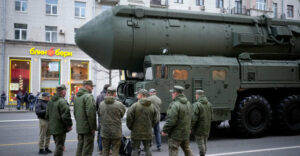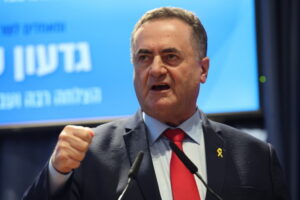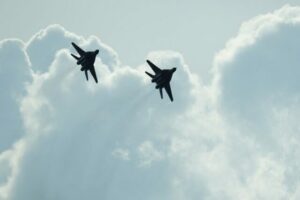The West and Russia appear to be “sleepwalking” in the field of Ukraine, where, after 1,000 days of war, the escalation brings the nuclear threat to the forefront as openly as it has not been seen since the end of the Cold War.
The enhancement of Russia’s nuclear doctrine is clearly a response to the active involvement of the West in favor of Ukraine and the permission given by President Biden, shortly before leaving the White House, for strikes even within Russian territory using American ATACMS missiles.
President Putin now has the ability to order a nuclear strike even if Russia is attacked by any state using conventional weapons and supported by a nuclear power. This includes attacks with missiles, aircraft, and even drones.
Everyone assumes that the nuclear threat is merely a negotiating tool for Russia, aiming to prevent further escalation and, primarily, to block the provision of new advanced weapons to Ukraine, at a time when Russia is gaining ground on the battlefield. As an American analyst comments, Vladimir Putin did not respond with the nuclear threat when the major “red line” of invasion and occupation of Russian territory in Kursk was indeed crossed, and it is estimated that he will not activate the nuclear doctrine simply because of the use of ATACMS for attacks on Russian soil…
Nevertheless, it seems likely that the Russian president will try to avoid “falling into the trap” and leading to such an escalation, even with the deployment of nuclear weapons, as such a move would burn bridges with Donald Trump, with whom he hopes for a peace settlement in Ukraine to Russia’s benefit.
Ukraine rushed to take advantage of the situation, and as soon as it became known that President Biden gave the “green light” for the use of ATACMS on Russian territory, it launched an attack against facilities in Russia’s Bryansk province.
Why Biden Approved ATACMS
Joe Biden’s decision is clearly aimed at entrapping his successor, Donald Trump, and binding him to strong military support for Ukraine. His goal was to trigger such an escalation that Russia would be forced to either respond or retreat, effectively “tying the hands” of the incoming U.S. president, making it impossible to end the war with “a single phone call,” as Trump himself had previously claimed.
Biden’s choice is of extremely high risk, based on the assessment that Russia and President Putin are bluffing. According to the U.S., this was also the case with the supply of F-16s to Ukraine, as well as with the Ukrainian invasion and occupation of Russia’s Kursk province.
Had this permission been granted to the Ukrainians a few months ago, it might have influenced Russia’s defenses, prevented aggressive actions in Donetsk, and perhaps pushed it towards negotiation. Now, with Donald Trump set to occupy the White House in a few weeks, President Putin has no reason to back down, no matter how serious the blows inflicted within Russian territories by American or British missiles.
Currently, it is estimated that the limited number of ATACMS provided to Ukraine, as well as their range, are insufficient to reverse the course of the war. This is especially true as Russia, in recent days, has launched a strong offensive in Donetsk, aiming to secure as much territorial gain as possible for future negotiations when – and if – the time for peace talks comes.
For Ukraine, the major challenge, in light of Donald Trump’s imminent U.S. presidency, is to reach a compromise, potentially involving territorial concessions in exchange for peace. Therefore, it seeks to demonstrate that it can still stand against Russia and send the message to Trump that a Ukrainian victory would also be a victory for the United States.
Putin’s New Nuclear Weapons Decree
Vladimir Putin signed a decree approving the updated nuclear doctrine, altering the parameters for when Russia may use nuclear weapons. The updated document now states that any attack on Russia by a non-nuclear state, if supported by a nuclear power, will be considered a joint attack.
The doctrine also states that Russia may use nuclear weapons in the event of a critical threat to its sovereignty and territorial integrity (including that of its ally, Belarus). As such, the launch of ballistic missiles against Russia will be considered one of the conditions that could justify a response using nuclear weapons.
In an update to the nuclear doctrine in 2020—prior to the start of the war—Putin had declared that Moscow reserves the right to use nuclear weapons “when the very existence of the state is threatened.” However, last September, changes to the Nuclear Doctrine were introduced, stating that Moscow could use nuclear weapons when facing “a critical threat to its sovereignty.”
Moscow aims to send a message not only externally but also internally that it is not bluffing and that there is a risk of widespread military involvement. The Russian Ministry of Emergency Situations is proceeding with the mass production of mobile shelters.
These shelters, called “KUB-M” units, resemble containers, each capable of accommodating 54 people and providing 48-hour protection against various threats, including “natural disasters and man-made accidents,” the “air shock wave and light radiation of a nuclear explosion,” penetrating radiation, and radioactive contamination of an area, the Russian Ministry stated on Monday.
Ask me anything
Explore related questions





